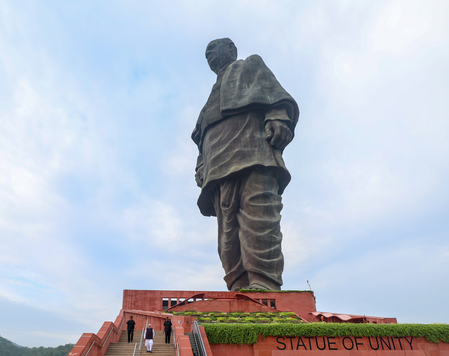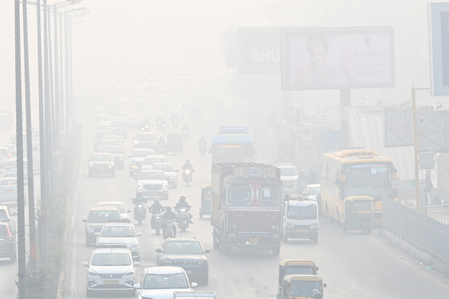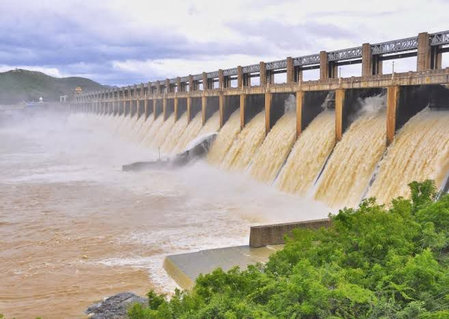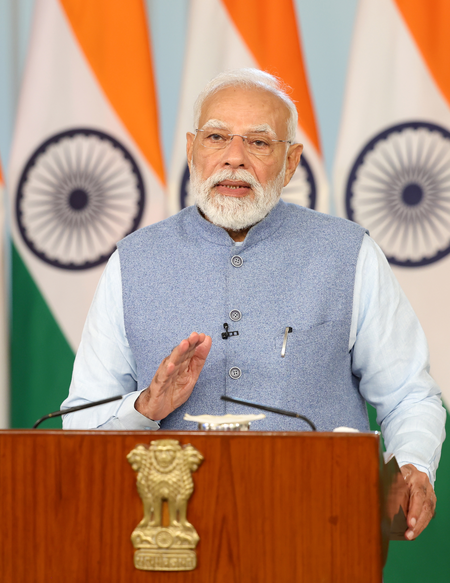
Ladakh, Aug 23 (IANS) Years ago, when the pandemic was not in the dictionary of even those swearing by Apocalypticism, artist Vibha Galhotra stunned everyone when she made her subjects wear masks in the face of deadly air.
For many in the art world, the idea seemed way far-fetched. Well, those very people had to bite their tongues when the pandemic struck and reality became more absurd than fiction.
“When your concerns are extremely close to the climate and environment, it is not tough to gauge the direction where we are headed. Sometimes one can feel the vibrations of the impending doom. See the polluted Yamuna in New Delhi, and you will know what the future holds,” she tells IANS.
Amid the lunar landscape of Disko Valley in Ladakh, where ‘sa Ladakh’ is organizing Asia’s highest land art exhibition, exploring climate, culture and community, supported by the German embassy in India, Galhotra is busy giving final touches to her large-scale work ‘You Don’t Own Me’.
“A few months back, Raki Nikahetiya, co-founder of ‘sa Ladakh’ met me in Delhi and talked about this project. I was excited as there are not many land art exhibitions in India. Moreover, it makes so much sense to talk about the Himalayas right now considering the devastation we have have witnessing nowadays.”
The artist who has now spent months here working on her land art, says it has been a great learning curve when it comes to acquainting herself with the culture of this region.
“Everybody around has been extremely supportive. Last month, it was the festive season here and no tailors were available. However, a community member helped by sending his two sisters who knew how to stitch.”
Galhotra’s work involves using found clothes and making the landscape her canvas. The huge type (It’s 48 feet by 65 feet) can be visible from an airplane. The drapes not only signify the absence but also accentuate a faint presence of those who once wore them, as if they are still around in spirit — to talk for nature; and nature reclaiming itself.
Even as the thin air makes breathing a task, this conceptual artist, who has consistently worked on climate since her early years, says she has always been very sensitive to the environment with her bodily conditions changing with the fluctuation in the environment.
“If one natural element alters, so will the other, and I can sense that imbalance well. If the water health is not good, it will affect me. There is something peculiar about water that fascinates me. By the way, I am also scared of it.”
During the event, a short film made by the artist ‘(Un)Promised’ was also screened.
Shot in India, Israel and Jordan, the film centres revolves around the protagonist, a nomad of both space and time, who wanders through a nondescript yet dramatic landscape, which is slowly collapsing from a dearth of sustenance and resources.
Through the body, experience, and memory of the protagonist, who aimlessly walks through vast landscapes before an eventual collapse, Galhotra speaks of a humanity that has been pushed into unbearable toxicity due to the prevalent forces of capitalism and exploitation.
“I wrote it during Covid and started imagining this gender-fluid zombie wearing a hazmat suit as the entire environment has become too toxic for the human body. All aspects of human identity would therefore be lost. I was looking at dry landscapes and not aiming for any political interventions but in fact stressing the scarcity of water. I happened to be in Israel for a three-month-long project and started shooting. In fact, Jordan was the perfect location for this, the desert there is mesmerising and one does not feel she/he is on earth,” says this artist whose work has been shown or is in the collections of the Kiran Nadar Museum of Arts, Pizzuti Collection, Casa Masaccio Arte Contemporanea, the Singapore Art Museum, Essl Museum, Austria, Devi Art Foundation, and Europas Park.
All set for a show coming up in Johannesburg, she is also making a new film.
“And yes, I have gone back to my charcoal paintings as well,” she concludes.
–IANS
sukant/khz




